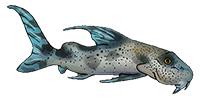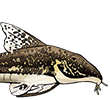Author : Fábio Hiroshi Takagui, Ana Lucia Dias, José Luís Olivan Birindelli, Ana Claudia Swarça, Renata da Rosa, Roberto Laridondo Lui, Alberto Sergio Fenocchio, Lucia Giuliano-Caetano
Book : Comparative Cytogenetics 11(1): 55-64 (09 Jan 2017)
Published : 09 Jan 2017
URL : http://compcytogen.pensoft.net/articles.php?id=10496
PDF : http://compcytogen.pensoft.net/lib/ajax ... _preview=1
DOI : https://doi.org/10.3897/CompCytogen.v11i1.10496
Abstract
The family Doradidae (Siluriformes) is an important group of fishes endemic to freshwater ecosystems in South America. Some cytogenetic studies have been conducted focused on the group; however, there are no reports on the occurrence of B chromosomes for the family. In this paper the chromosomal characteristics of Platydoras armatulus (Valenciennes, 1840), Pterodoras granulosus (Valenciennes, 1821) and Ossancora punctata (Kner, 1855) were investigated through classical cytogenetics approaches. The conventional staining reveals 2n=58 in Platydoras armatulus and Pterodoras granulosus, however with distinct karyotypic formulae, possibly originated by pericentric inversions. In Ossancora punctata a derivate karyotype was described with 2n=66 and predominance of acrocentric chromosomes. The C banding pattern was resolutive in discriminating the three species, being considered an important cytotaxonomic marker. All species showed B chromosomes totally heterochromatic with non-Mendelian segregation during meiosis and low frequencies in mitotic cells. The probably origin of these additional elements was through fragmentations of chromosomes of the standard complement, which occurred recently and independently in these three species. The diploid number observed in O. punctata is an evidence of centric fusions and up to the moment it is the highest diploid number reported for Doradidae.
Keywords : Centric fusion, chromosomal rearrangements, diploid number, neotropical fish, pericentric inversions, supernumerary chromosome




